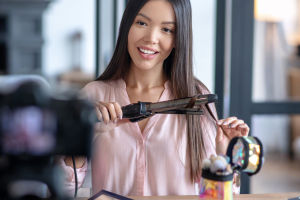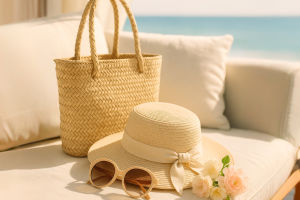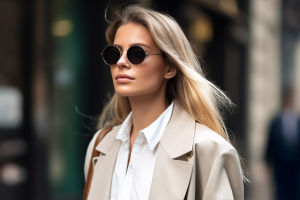Shirt Stack Smarts
You're standing in front of your closet, one shirt in each hand: a short-sleeve button-down and a long-sleeve one you haven't worn since spring. It's not quite hot, not quite cool.
Do you go casual? Dress up? Or just throw on a T-shirt and call it a day?
Here's the better option: wear both shirts.
Yes, both. One over the other. This isn't a fashion dare—it's a practical, sharp-looking solution for the messy in-between weather of late summer and early fall. And when done right, layering long and short-sleeve shirts doesn't look cluttered. It looks intentional. Confident. Like you know a trick most people don't.
The secret? It's all in the sleeve roll, the collar play, and the fit balance. Let's break down how to master this move for real life—whether you're at a café, a meeting, or a weekend walk across town.
The Power Move: Long Sleeve Under, Short Sleeve Over
This combo is the foundation of smart transitional layering. The long-sleeve shirt acts as a base layer—think of it like a lightweight thermal, but dressier. The short-sleeve shirt on top keeps it casual and breathable.
Here's how to nail it:
• Start with a fitted long-sleeve shirt
Choose one that hugs your torso without pulling. Cotton poplin or stretch-cotton blends work best—they don't bunch under another shirt. Solid colors (navy, charcoal, white) or subtle patterns (micro-checks, faint stripes) keep the look clean.
• Pick a short-sleeve shirt with room to spare
This one should be slightly looser. Camp-collar shirts, Cuban-styles, or relaxed button-downs are ideal. They drape well and don't strain over the extra layer. Go for prints if you like—florals, geometrics, or gingham add personality without overwhelming.
• Roll the long sleeves just right
Push them up to the mid-forearm, not the elbow. This shows a clean band of fabric under the short sleeve, creating contrast. If the roll slips, use a light dab of clear hair gel on the inside cuff to grip your skin—just enough to hold it in place.
• Tuck or untuck wisely
For a polished look, tuck both shirts in and add a slim belt. For casual, leave the short-sleeve shirt untucked and the long-sleeve one tucked or half-tucked. Avoid double untucking—it can look messy.
This combo shines in mild mornings or air-conditioned spaces where you need a little arm coverage but don't want to overheat.
Reverse Layering: Short Sleeve Under, Long Sleeve Over
Now flip the script. This time, the short-sleeve shirt stays on as a base, and you layer a long-sleeve shirt over it—left open like a light jacket.
This works especially well with:
• Graphic or boldly printed short-sleeve shirts (the collar and open front frame the design)
• Lightweight denim or chambray long-sleeve shirts (they drape naturally when unbuttoned)
Steps to style it:
• Wear the short-sleeve shirt as you normally would—tucked or untucked.
• Slide on a long-sleeve shirt in a neutral tone: olive, stone, light gray.
• Leave it fully unbuttoned.
• Roll the sleeves of the outer shirt to the elbow for a relaxed vibe.
This look is perfect for late afternoons when the sun dips but the air stays warm. It adds depth to your outfit without adding weight.
Bonus: If the temperature drops further, simply button up the outer shirt. You've just transitioned from layered casual to structured smart-casual in seconds.
When to Add a T-Shirt Base
Sometimes two button-downs are too much fabric. That's where a simple crewneck tee comes in—worn under both shirt types.
Try this:
• Wear a white or heather-gray T-shirt underneath
• Layer a short-sleeve button-down over it, left open
• Drape a long-sleeve shirt over that, also open
The result? A three-layer texture play with varying lengths and sleeve styles. The tee grounds the look, the middle shirt adds pattern, and the outer shirt provides coverage.
This works best with thinner fabrics and shorter hems—avoid boxy tees or long tails that bunch at the waist.
Outfit Combos for Real Situations
1. Casual Meeting or Brunch
• Light blue long-sleeve shirt (sleeves rolled)
• White short-sleeve camp-collar shirt on top
• Dark chinos
• Minimal leather loafers
Looks put-together without trying too hard. The double collar adds interest.
2. After-Work Walk or Drinks
• Navy printed short-sleeve shirt (left on)
• Denim long-sleeve shirt open over it
• Rolled sleeves on the outer shirt
• Beige trousers
• Clean sneakers
Effortless, textured, and ready for changing temps.
3. Travel Day or Errands
• White T-shirt
• Gingham short-sleeve shirt, unbuttoned
• Stone-colored long-sleeve shirt, open
• Rolled sleeves on both outer layers
• Comfortable ankle boots
Adaptable: peel off layers as you warm up, add them back when you cool down.
Fine Details That Make the Difference
• Collar alignment matters. If both shirts are buttoned, make sure the inner collar sits neatly under the outer one. Press them flat before dressing.
• Stick to a color family. Try all earth tones, cool blues, or neutrals. Avoid clashing brights unless you're going for bold.
• Fabric weight is key. No thick flannels or heavy oxfords in this mix. Stick to poplin, cotton voile, or lightweight twill.
• Keep buttons minimal. If both shirts are buttoned, it can look stiff. Usually, only the inner shirt should be fully closed.
You don't need a new wardrobe every time the weather wobbles. You just need to wear what you already own in a smarter order.
Next time you're unsure what to wear, don't reach for a jacket or a hoodie. Reach for a second shirt. Roll the sleeves, adjust the collar, and step out knowing you've got both style and adaptability on your side. That's not just dressing well—it's dressing wisely.
-
 Hair Tools You Need!Which Tools Transform Hair Instantly? Can Styles Last Longer? Ready To Upgrade Daily Routines?
Hair Tools You Need!Which Tools Transform Hair Instantly? Can Styles Last Longer? Ready To Upgrade Daily Routines? -
 Summer's Last ShineHow to style your favorite warm-weather accessories for early fall—without missing a beat.
Summer's Last ShineHow to style your favorite warm-weather accessories for early fall—without missing a beat. -
 Late Summer Layering GuideBig morning-evening temp swings? These 3 light jackets have you covered!
Late Summer Layering GuideBig morning-evening temp swings? These 3 light jackets have you covered!
Copyright © zogu 2021 - 2025. All Right Reserved.